More about: 10 Things to Do at Ground Zero in New York City
Ground Zero was the scene of one of the most shocking events in the city's recent history and is one of the most moving places to visit in New York. Here's what to see when you're in the area.
1. Climb One World Observatory, New York's highest observation deck
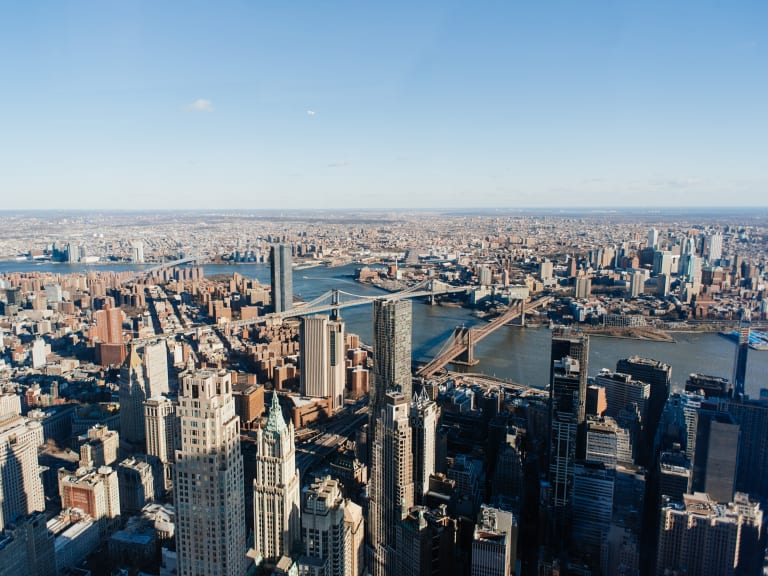
The top floors of One World Trade Center, from 100 to 102, are home to one of the most innovative observatories ever built in the Big Apple. With a height of 386.5 metres, it is the highest observation deck in New York. From here there are spectacular 360º views of the city.
However, when you book tickets for the One World Observatory you will notice that it does not have an outdoor area unlike other observation decks such as the Top of the Rock or The Edge, but is all glass and interior so the perception is somewhat different. Also, for those who want to take pictures, it doesn't have the same charm.
In any case, if you like skyscrapers and modern architecture, I recommend you buy your skip-the-line tickets for the One World Observatory, as the design of this observation deck allows you to see up to 80 kilometres of the city in all directions: the Empire State Building, the Brooklyn Bridge... and even the Statue of Liberty.... and even the Statue of Liberty.
The experience starts from the moment you enter the lift, which is covered with LED panels that show the development of New York from its origins. In just 47 seconds! It is also a symbol of the new World Trade Center after Ground Zero that New Yorkers are proud of.
Practical information
- Where: The observatory is located in the One World Trade Center skyscraper at 285 Fulton Street.
- Hours: Open daily from 9AM to 8PM.
2. See the 9/11 Memorial dedicated to the victims

The 9/11 Memorial is one of the most moving things to do in New York. Located at Ground Zero, it pays tribute to all those who died in the terrorist attacks of 2001. This and the 9/11 Museum are the two monuments that struck me the most at Ground Zero and that leave your emotions running high.
On the same site where the Twin Towers once stood imposingly, there is now the Memorial Plaza, two huge fountains fed by waterfalls that are lined with bronze plaques on which the names of all the victims have been engraved.
They in turn are enveloped by hundreds of beautiful oak trees brought from Washington and Pennsylvania, also the scenes of 9/11. The result is a magnificent oasis of seclusion amidst the bustle of the city, inviting us to take a stroll to remember the past.
3. See the 9/11 Survivor Tree
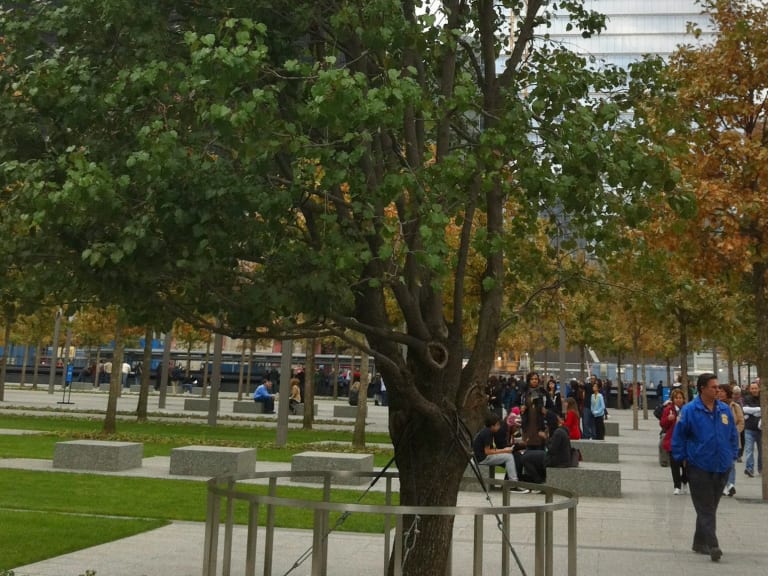
Among all these trees, one stands out, called the Survivor Tree, the only tree that survived the tragedy. It was found a month after the attacks and was in very poor condition, so it was removed so that it could be recovered.
In 2010, the surviving tree was returned to its original location and is now a symbol of hope and resilience for all New Yorkers and the world.
4. Visit the striking 9/11 Museum
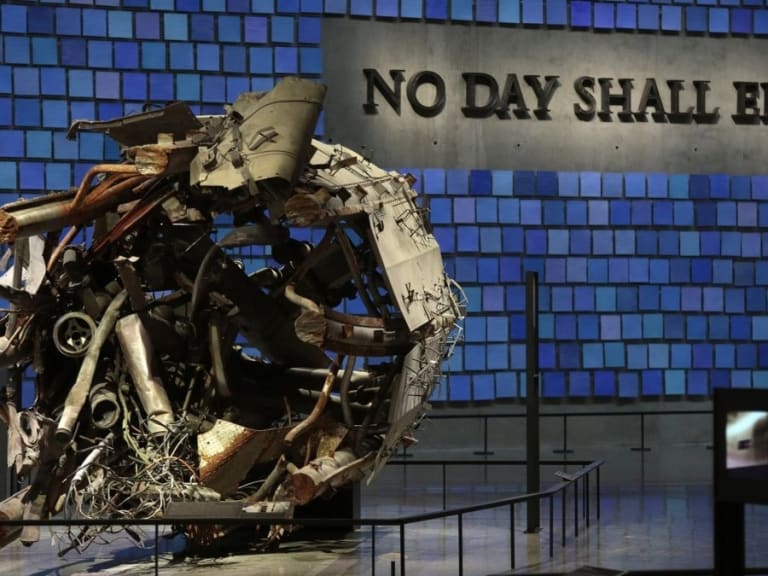
The 9/11 Memorial also features a museum that exhibits a collection of more than 10,000 objects recovered from the rubble, which belonged to the victims and the people who tried to help them after the attack. It opened in May 2014 and documents the history and significance of the attacks on the World Trade Center.
For anyone who has witnessed 9/11 in one way or another, visiting the National September 11 Memorial & Museum is a very moving experience.
What is the 9/11 Museum like on the inside?
That the 9/11 Museum is located underneath the Memorial Plaza, within the remains of the original World Trade Center structure, is amazing. There is nothing that can prepare you for what you will see inside the 9/11 Museum.
The remains of the original columns of the Twin Towers, the recovered artifacts of the victims, the testimonies of the survivors and above all the staircases where hundreds of people tried to flee for their lives are all awe-inspiring. The museum even houses the remains of a fire truck that took part in the rescue efforts.
Practical information
- Where: The National September 11 Memorial & Museum is located at 180 Greenwich St, Lower Manhattan.
- Hours: Open from 9 AM to 7 PM daily except Sunday, which is closed to the public.
5. Stroll through 9/11 Memorial Glade, the memorial to the heroes
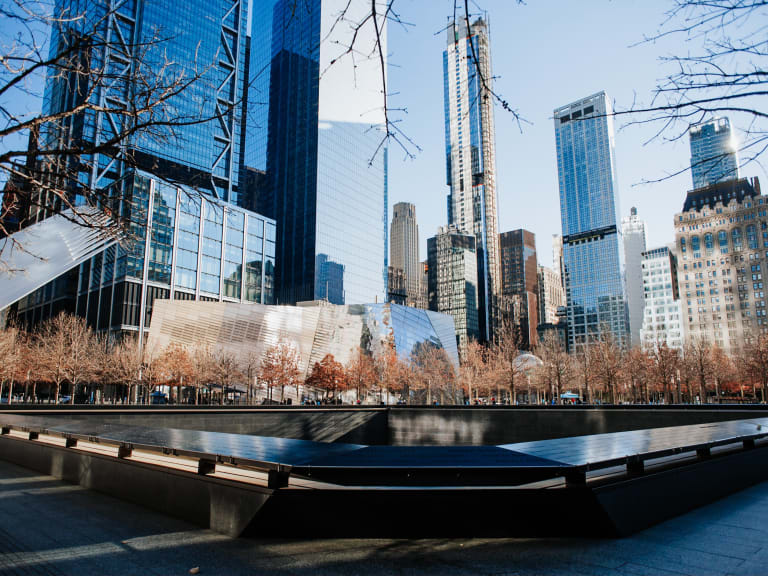
The Glade Memorial located in Memorial Plaza, near the National September 11 Memorial & Museum, is dedicated to the rescue teams and those who died as a result of the indirect consequences of the attack.
Many firefighters, police, ambulance crews and other workers lost their lives while trying to help the victims or clearing the rubble. Others lost their lives to disease after being exposed to the noxious toxins in the air at Ground Zero.
The 9/11 Glade Memorial is a tribute to all of these people and to the nearly 3,000 direct victims and their families.
What is the 9/11 Glade Memorial like?
The story behind this memorial is very moving. It is a four-metre long pathway with six monoliths that seem to spring out of the ground and cross it. Each has steel from the One World Trade Center and was designed using a traditional Japanese technique called kintsugi, which involves repairing broken ceramic pieces by filling the cracks with gold.
Kintsugi represents the idea that no scars should be hidden. On the contrary, they have to be shown because it is a symbol of damage but at the same time of strength. A concept that comes to signify New York City's capacity to overcome adversity without ever forgetting what happened on 9/11. A beautiful lesson in resilience.
6. See One World Trade Center, one of the tallest in the world
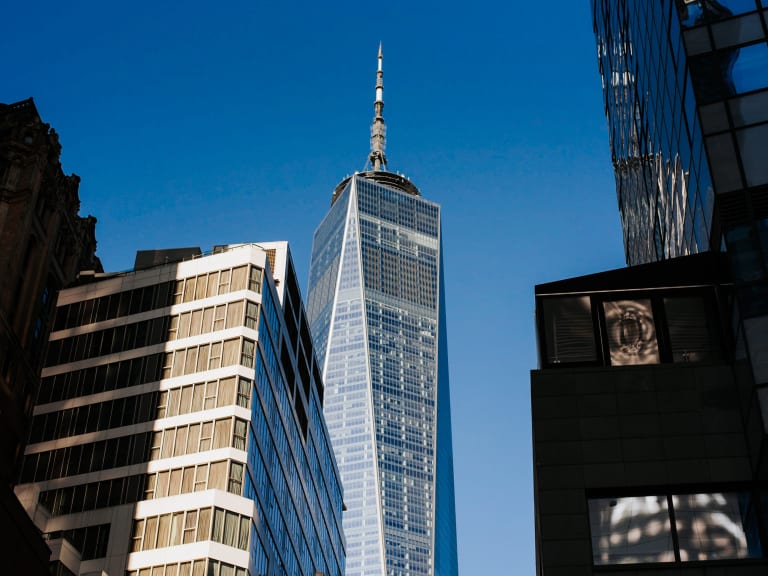
After the attack, the area had to be completely rebuilt. The Twin Towers gave way to four large, modern skyscrapers, of which the One World Trade Center stands out, a building that has become one of New York's main landmarks.
Initially it was christened Freedom Tower, but this name was later discarded because of its emotional weight. Thus, One World Trade Center was finally chosen as the name of the tallest building in the complex with 104 floors and 541 metres in height, that is, 1,776 feet, a symbolic number that refers to the year of the Independence of the United States. This makes it the sixth tallest building on the planet and the first outside Asia.
It is accompanied by other skyscrapers of glass, steel and concrete called 2 WTC, 3 WTC, 4 WTC and 7 WTC, intended for offices and other purposes, which replaced several of the buildings affected after the collapse of the Twin Towers.
7. Discover The Oculus and tour the mall
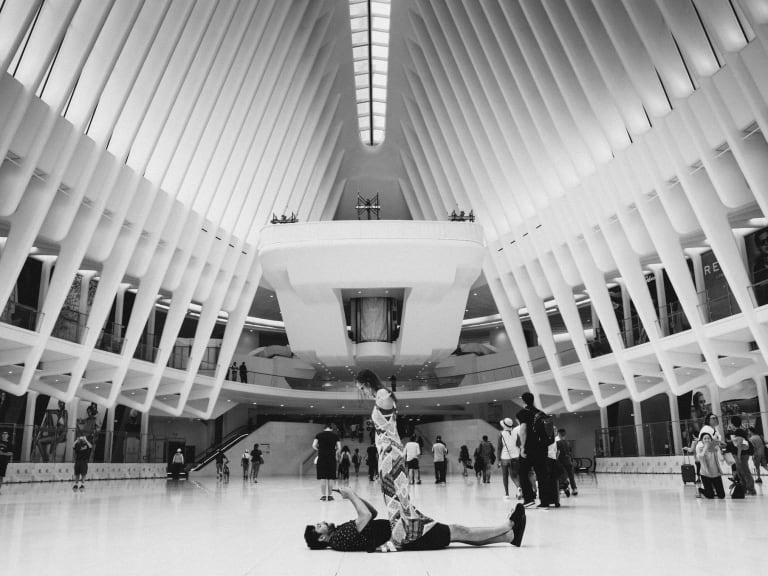
Where the PATH Station once stood, destroyed after the 9/11 terrorist attacks, the WTC Central Station has been built by Spanish architect Santiago Calatrava.
It is a huge and spectacular central station that connects numerous underground and train lines and large buildings in the Financial District. It is crowned by a glass and metal dome called The Oculus through which light can easily flow, illuminating the entire complex.
For its design Calatrava was inspired by the way a child releases a dove he is holding into the sky, but some say it looks like a big eye with eyelashes or that it is like being inside a whale...
The truth is that it is very different from taking a guided tour of Grand Central Terminal, the most important railway station in Manhattan and, in my opinion, one of New York's architectural jewels dating from the 19th century. Although it is difficult to compare them as they are very different in style.
The Westfield World Trade Center Mall
Just below The Oculus structure is Westfield World Trade Center Mall, a shopping mall with over 50 shops and several restaurants (Eataly, Shake Shack, Starbucks...) that replaced the World Trade Center Mall when it was destroyed in 9/11.
Westfield World Trade Center Mall is a great place to go shopping or to take a snack break after a visit to Ground Zero in New York City.
8. Take a tour of the Financial District
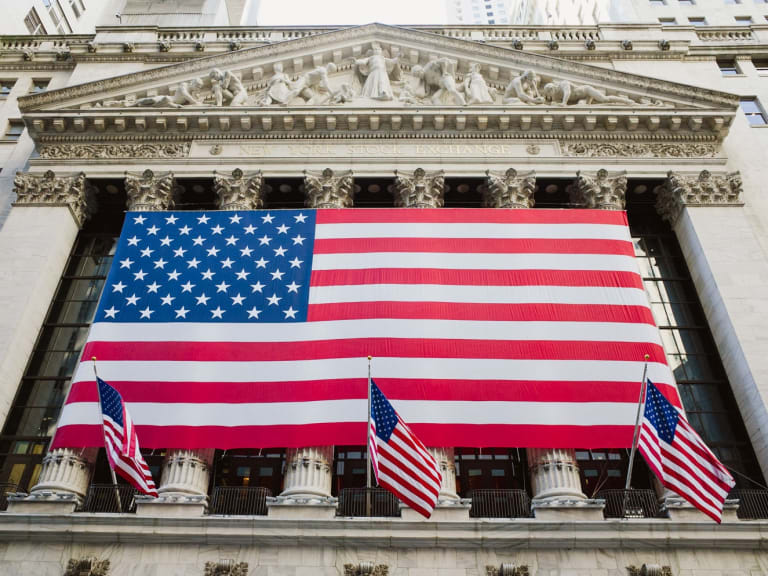
Lower Manhattan has a number of tourist attractions such as Battery Park, Wall Street and its Charging Bull, City Hall, the New York Supreme Court and Trinity Church, among others. But if there is one thing that attracts thousands of tourists to this area, it is New York's Financial District. Here, among hundreds of suit-wearing executives, you'll discover imposing buildings such as the New York Stock Exchange and the famous buffalo, which you'll have to pet for good luck.
In this area, the streets get narrower and the skyscrapers are even taller (if that's possible), so much so that you'll struggle to make out the blue of the sky between the tall buildings. Everyone's in a hurry here, so you'll also find plenty of fast-food joints where workers take a break from their day to grab a bite to eat.
9. Mix culture and shopping at Brookfield Place
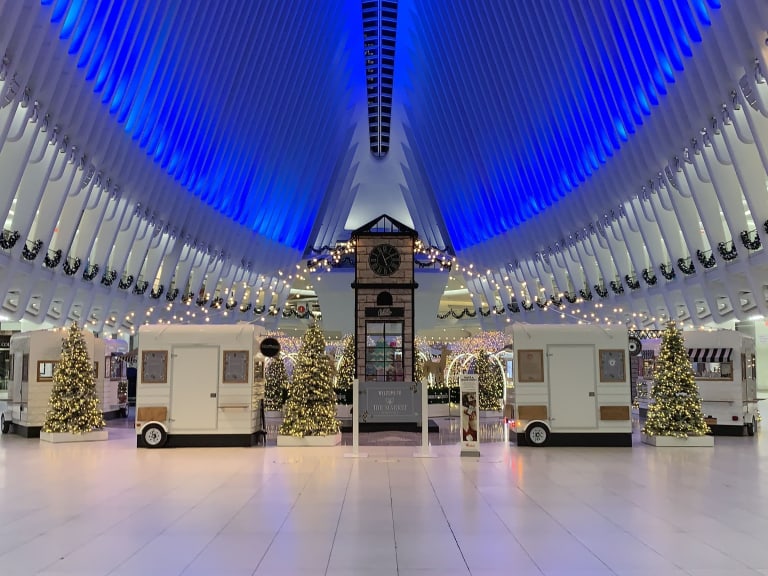
Speaking of shopping, the 9/11 attacks also damaged the former Winter Garden Atrium shopping mall. Although its structure withstood the attack, it was damaged under the rubble and the building had to be reconstructed to restore its former splendour and appearance.
In 2002, almost a year after the event, it reopened as Brookfield Place and we were able to walk through the galleries and marble staircases again, enjoying the beautiful glass windows that let in the natural light and the huge palm trees inside.
This shopping centre is a lovely place to take a break and have a snack or browse in the luxury shops. There is even a food market called Le District specialising in French cuisine where you can order what you like and sit down to eat at tables scattered around the mall.
What else is there to do at Brookfield Place?
Throughout the year, Brookfield Place hosts cultural activities such as exhibitions, concerts, performing arts and children's programmes for the whole family. If you're travelling to New York with children, it's a good idea to check out the cultural offerings on the official website because there's always something to do.
In addition, during the winter there is an ice rink outside Brookfield Place which is not as crowded as others in the city. I recommend you visit it at Christmas if you like skating as they also organise a beautiful light show in the central square.
Practical information
- Where: 230 Vesey Street.
- Opening hours: Open Monday to Saturday from 10 AM to 8 PM and Sunday from 11 PM to 18 PM.
10. Visit Saint Paul's Chapel

This chapel is a miracle. Despite being very close to where the Twin Towers were located, it was not damaged during the attack, unlike other more modern buildings in the area. Not a single pane of glass was broken. That is why Saint Paul's Chapel is known as "the chapel that stood".
It is the oldest religious building in Manhattan. Georgian in style, it is the only one from the colonial era on the island known because it was here that George Washington made his speech as the first president of the United States in 1789.
Centuries later, by surviving 9/11, it became a symbol of the triumph of life over unreason and barbarism. Because of its proximity to the area of the tragedy and the good condition it was in, Saint Paul's Chapel was used as a refuge for the police, firefighters and volunteers who worked for months at Ground Zero helping to clear the rubble and search for victims.
In fact, a room inside the church was dedicated as a memorial to those who died on 9/11. Saint Paul's Chapel is another of the places at Ground Zero in New York that I recommend you visit. Not only for its historical value but also for its emotional value to the city.
Practical information
- Where: 209 Broadway, between Vesey and Fulton Streets.
- Hours: The chapel is open daily from 8.30 AM to 6 PM.
What was the World Trade Center?

It was a complex located in Lower Manhattan where the iconic Twin Towers, symbol of the American financial world since its inauguration in 1973, were located.
The 9/11 terrorist attack devastated the World Trade Center and took the lives of thousands of people. The area where the tragedy occurred became a huge crater that was eventually rehabilitated to build a memorial to the victims.
Today it has become a symbol of resistance in New York and Ground Zero has been refurbished with several monuments that are well worth a visit.
Practical information
about Ground Zero in New York
- Where is it: In Lower Manhattan, next to Wall Street.
- How to get there: By public transport you can take the Broadway - Fulton St underground (lines 4 and 5) or the Cortlandt Street - World Trade Center underground (lines N and R); or the M05 and M20 bus.
Other interesting experiences near Ground Zero
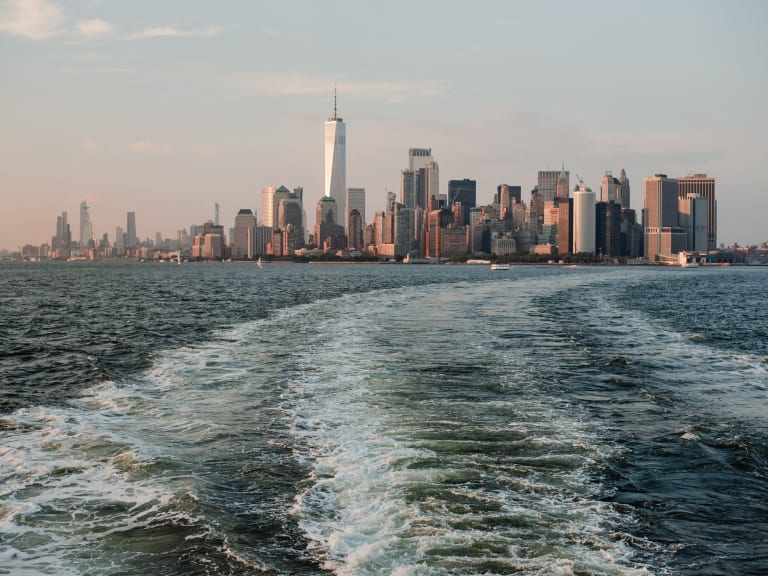
Take a guided tour of the Museum-Workshop
The Ground Zero Museum Workshop covers the entire post 9/11 era. Through images and recordings along with the voices of firefighters, police officers and survivors, you will see objects such as shards of glass from the windows of the towers and office supplies left behind at the time of the explosions.
The tour of Upper and Lower Manhattan
Manhattan is the heart of New York, one of those places you can't get enough of exploring. If you enjoyed your visit to Ground Zero, you might want to take the Upper and Lower Manhattan Tour, where you won't leave any important corners undiscovered.
With this tour you'll see from a bus all the sights of downtown New York, its emblematic neighbourhoods like Greenwich Village, Wall Street, Chinatown or Little Italy, as well as the streets that make Manhattan world famous like Fifth Avenue.
If you want to know more about this experience in New York, I recommend you to read the article about the Upper and Lower Manhattan Tour where I explain in detail everything you'll see, give you some useful tips and tell you more about other interesting experiences in the city that you won't want to miss.
Hop on one of the Hudson River Cruises
Lower Manhattan is a key location from where you'll find several piers where you can hop on the Hudson River cruises. There are tours to suit all tastes and budgets, from daytime tours to see the Manhattan skyline in all its splendour to luxury dinner cruises that depart every night and serve a gourmet dinner to enjoy the illuminated city.
Get to the Statue of Liberty
From Battery Park, next to Ground Zero, ferries depart to the Statue of Liberty. A ferry ride will give you the best views of Manhattan and Lady Liberty. Once you get to Liberty Island, you can visit her Pedestal and even her Crown, but it's best to book a tour of the Statue of Liberty and Ellis Island in advance.
Take the opportunity to visit Brooklyn
If you cross the Brooklyn Bridge, which I 100% recommend, you'll arrive in the Brooklyn borough, one of the trendiest areas of the city. Take the opportunity to walk its streets and avenues, take the legendary photo from DUMBO and have lunch or brunch in one of its hipster cafés.



